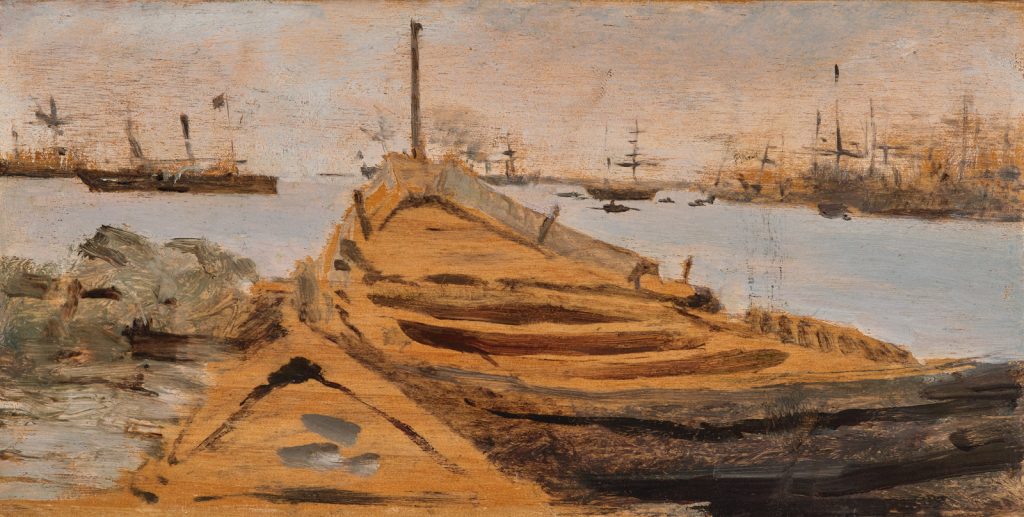Giuseppe De Nittis
(Barletta 1846 - 1884 St.-Germain-en-Laye)
'Le Barche' - The Boats, 1871-3
Oil on panel, 9 x 17.8 cm
Provenance:
Jean Dieterle, Paris;
Thence by descent in the Dieterle family.
Exhibited:
De Nittis e la rivoluzione dello sguardo, Ferrara, Palazzo dei Diamanti, December, 1, 2019-April, 13, 2020, p. 118, no. 12.
Literature:
Mary Pittaluga and Enrico Piceni, De Nittis, Milan 1963, no. 29;
Piero Dini and Giuseppe Luigi Marini, De Nittis. La vita, i documenti, le opere dipinte, catalogue raisonné, Turin 1990, I, p. 379, no. 120; II, repr.
We are grateful to Professor Christine Farese Sperken for examining the work. She has confirmed its authenticity.
In the years 1871-3 subjects such as harbors, seascapes and fisherfolk also played an important role in De Nittis’s oeuvre. These small-format studies testify to his strong attachment to the sea – Barletta, where he had grown up, is directly on the Adriatic coast. His output of marine studies was extraordinarily prolific and extremely varied. His imagery included tiny seascapes dotted with sailing ships and fishing boats, highly evocative views of the Naples coast, and sunsets over the sea. He also produced more mondaine versions of the subject with a distinctly Parisian flavor, for example the painting Amazzone sulla Riva del Mare [Amazon on the Shore]1 (1873).
Of the three marine studies presented here, the two that display the most modern and most rigorous attempts to include the brown tone of the panel as a coloristic element are the compositions Le Barche [Boats] and Spiaggia e Barche [Beach and Boats]. In Le Barche, two massive barges seem to pierce their way vertically into the center of the image. In Spiaggia e Barche a substantial area of the panel has been left bare for the nets, allowing the brown tone of the wood to gleam through, and this barely touched area is framed by richly glowing expanses of yellow.
Members of the Tuscan artists’ group known the Macchiaioli had made similar use of this ingenious stylistic device. De Nittis had come into contact with the group – despite being from Apulia – through his friend Adriano Cecioni, a painter and sculptor based in Florence. Both De Nittis and Cecioni were founding members of the School of Resina. Two of the Macchiaoli – Giovanni Fattori, who is probably the leading member of the group, and Giuseppe Abbati – made frequent use of the device.
In Marina e Velieri [Seascape with Sailing Ships] De Nittis employs a more delicate palette – the tonality is considerably lighter – and places emphasis on spatial depth. The two sailing boats seem to have been forced away from the center of the composition to the sides, to provide an unimpeded panoramic view of the sea, the headland and the distant hills.
1 Dini, Marini 1990, op. cit., Nr. 468.

